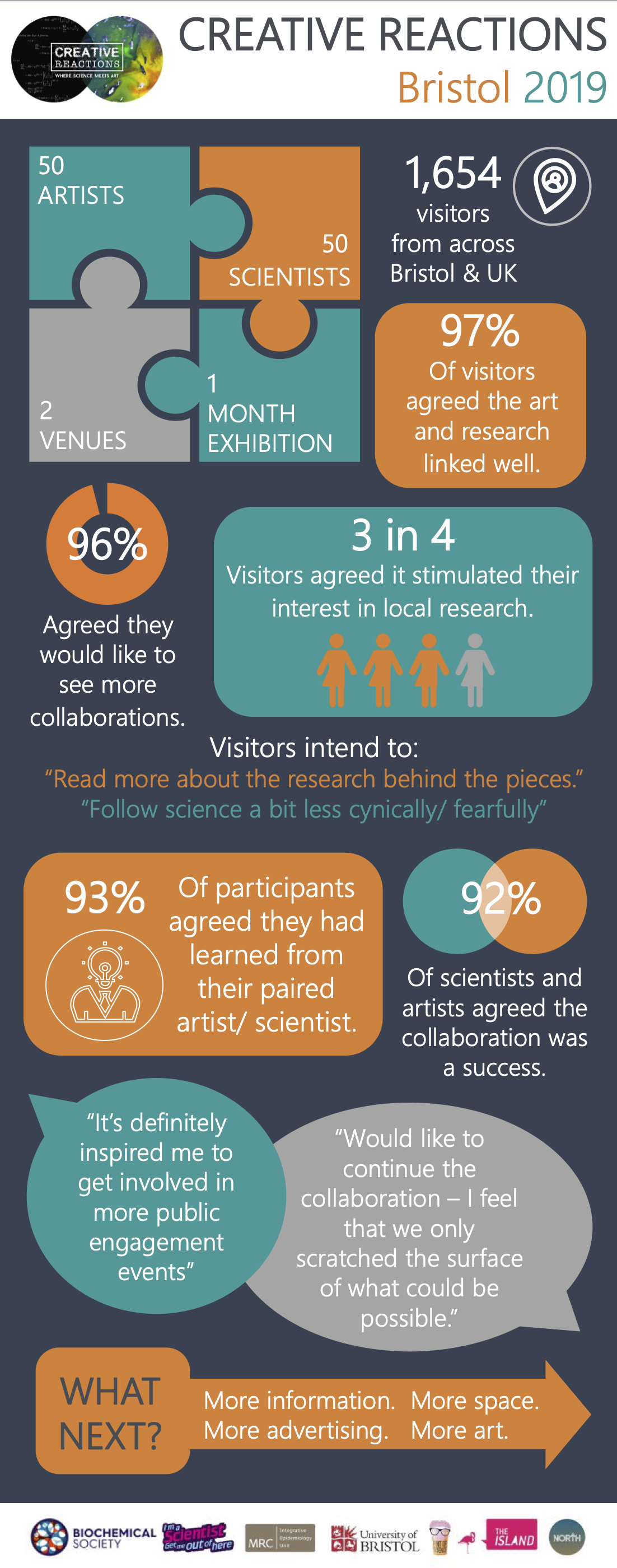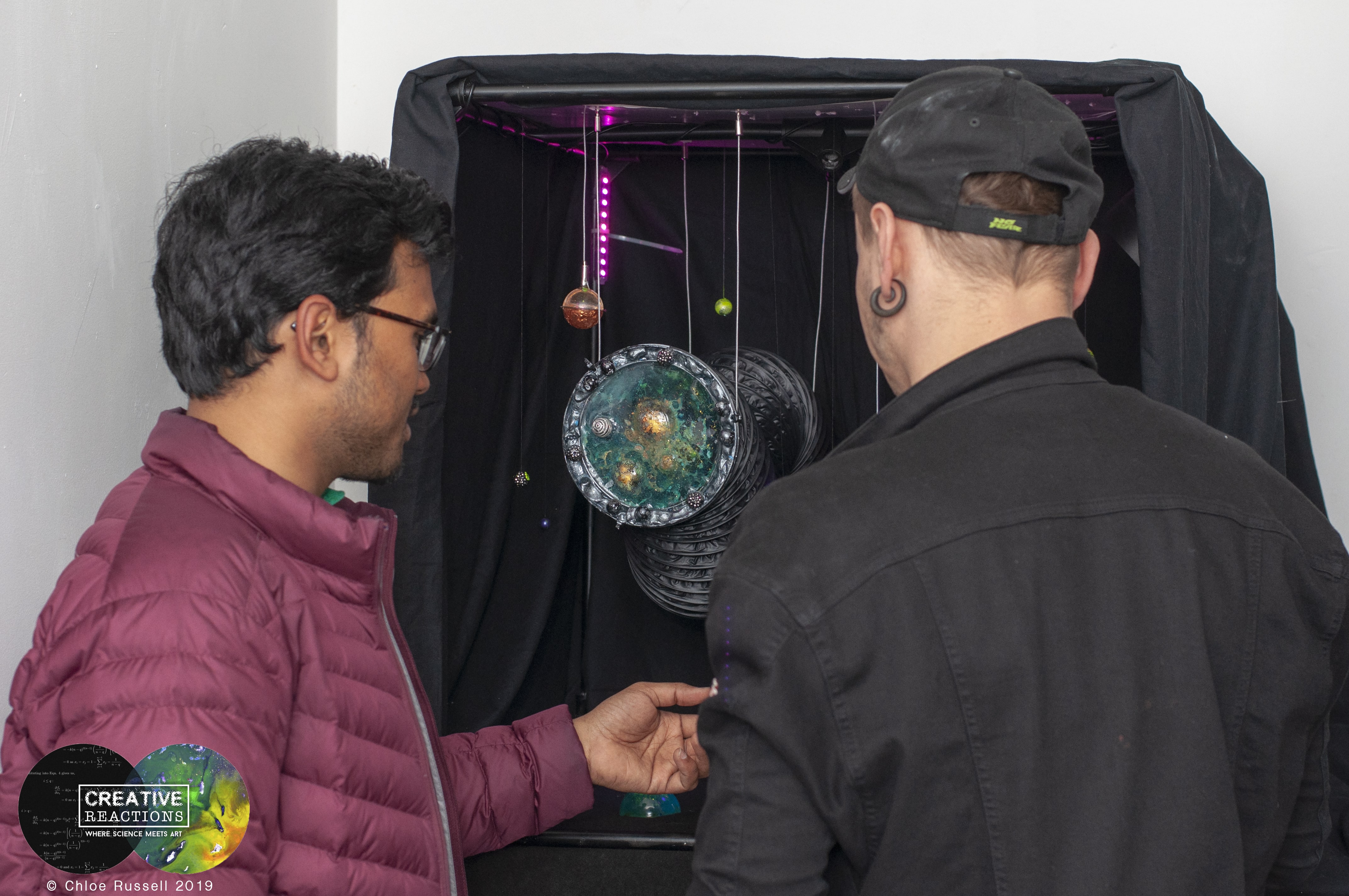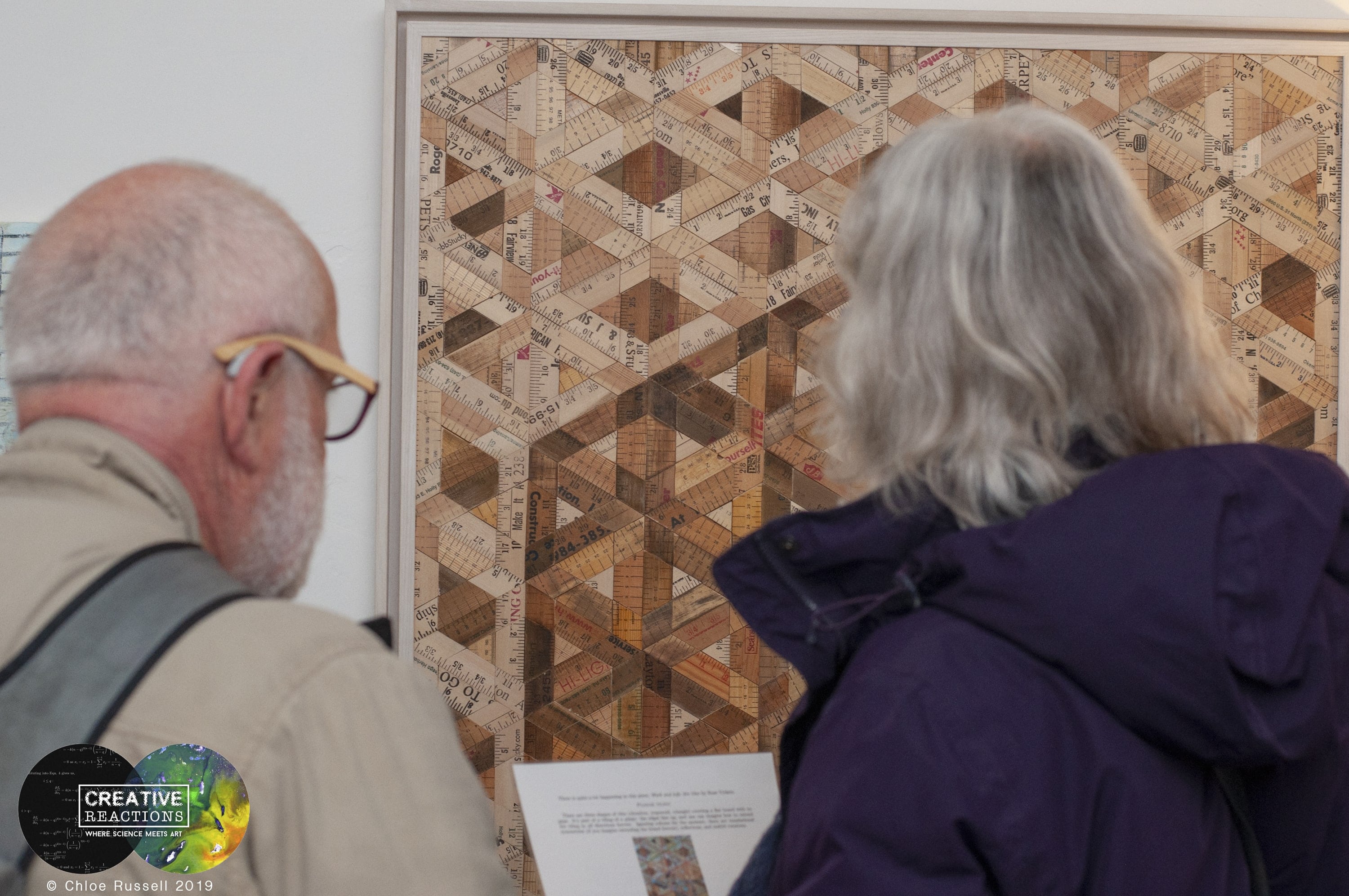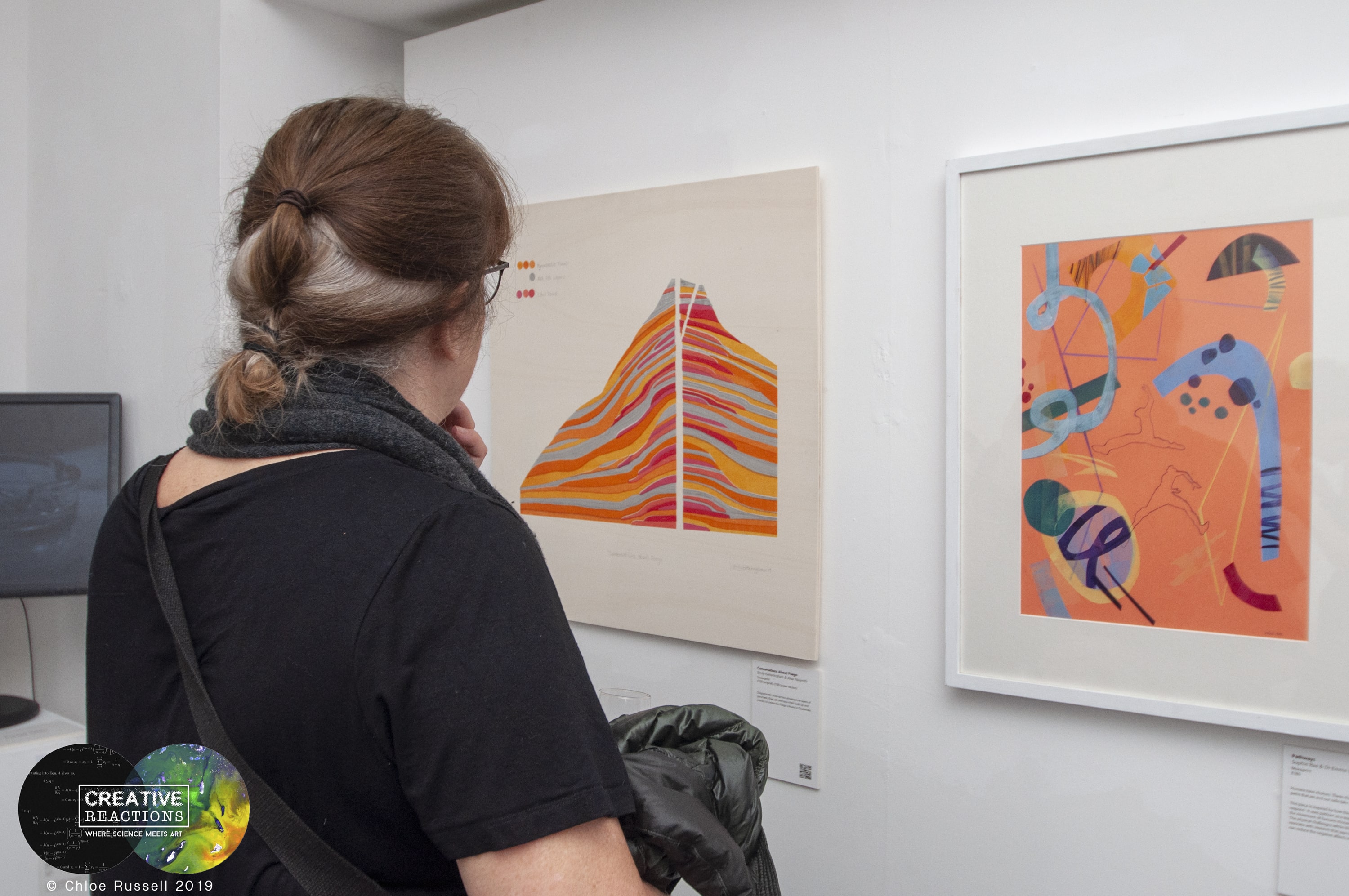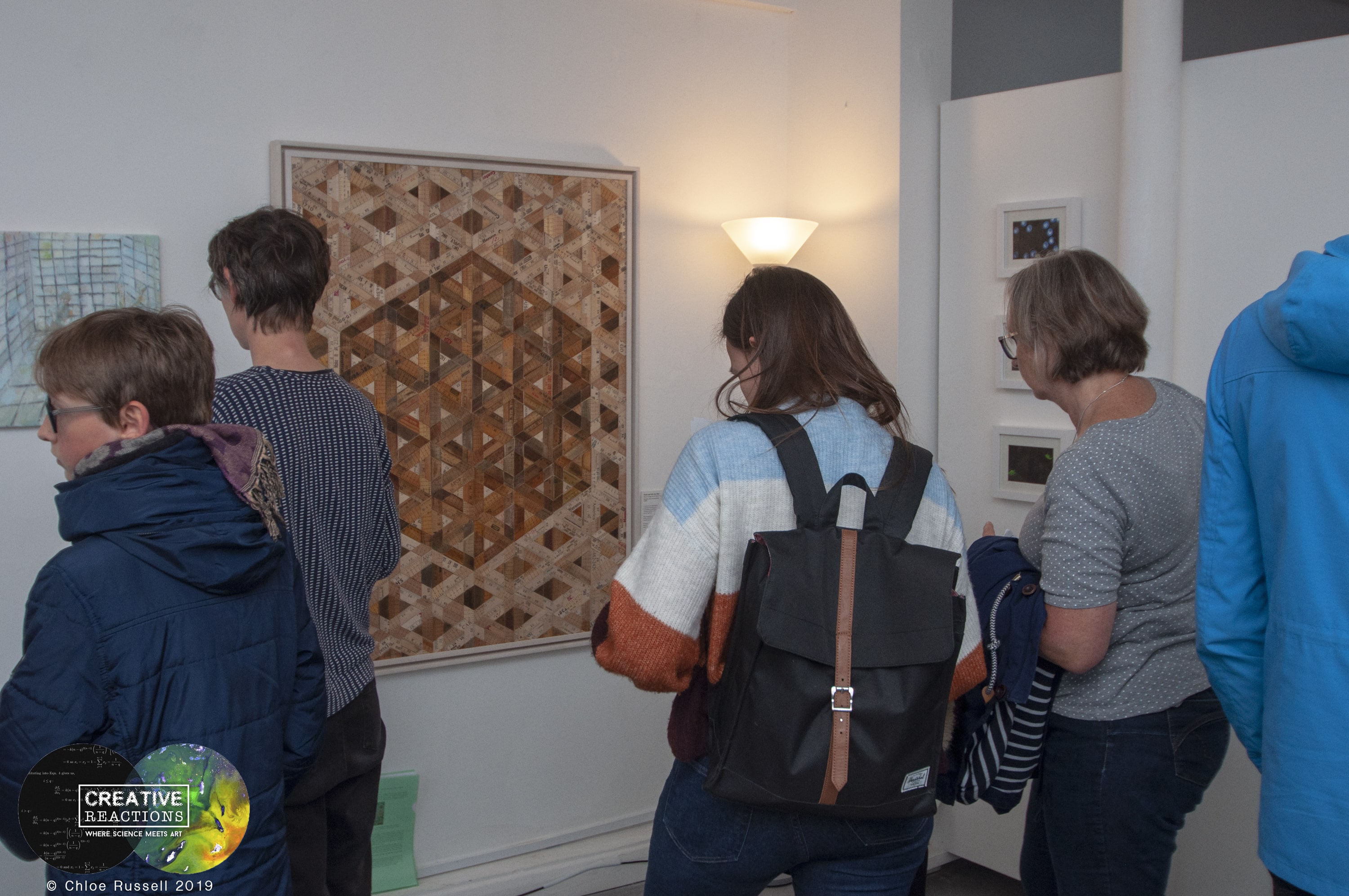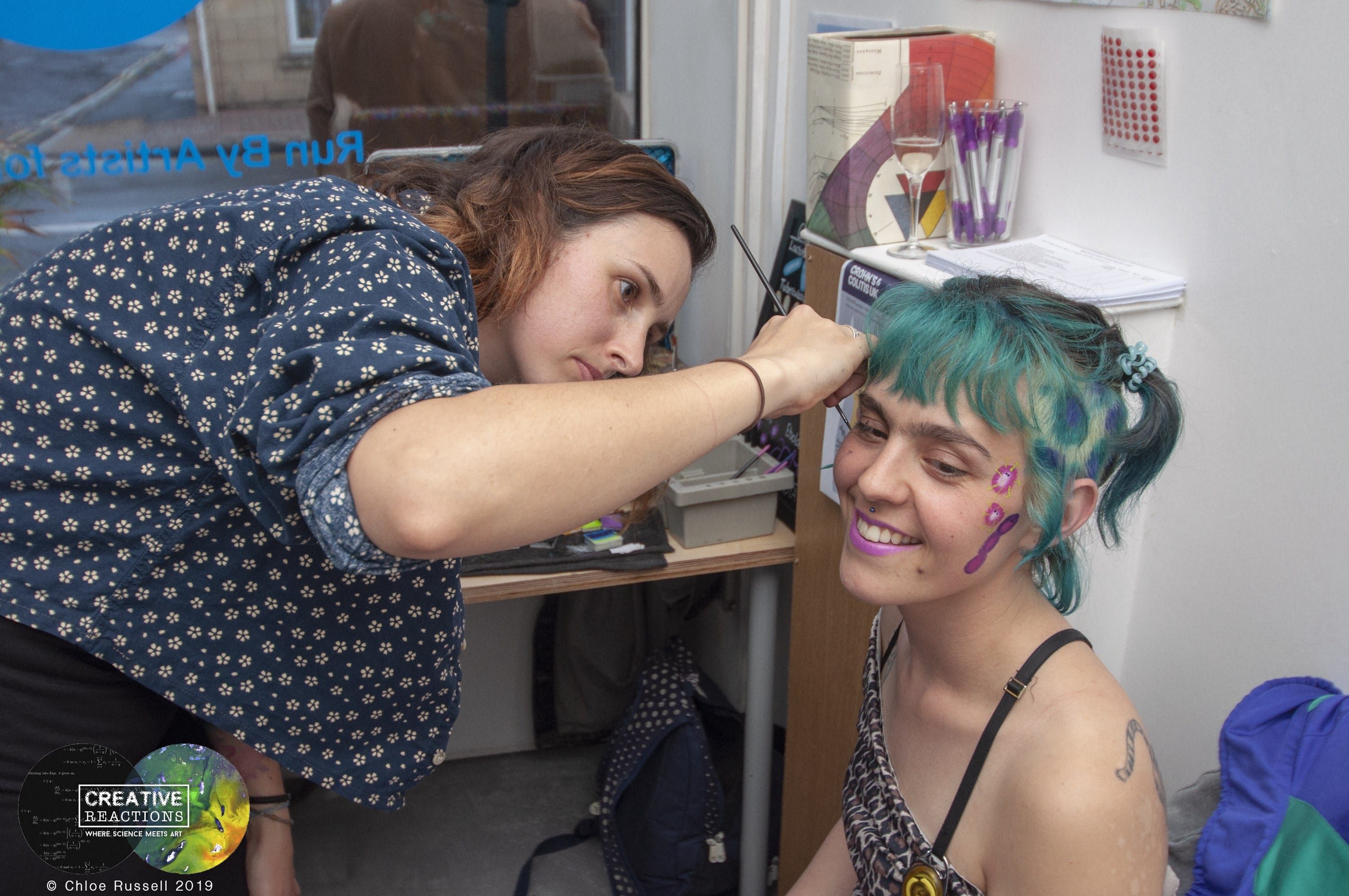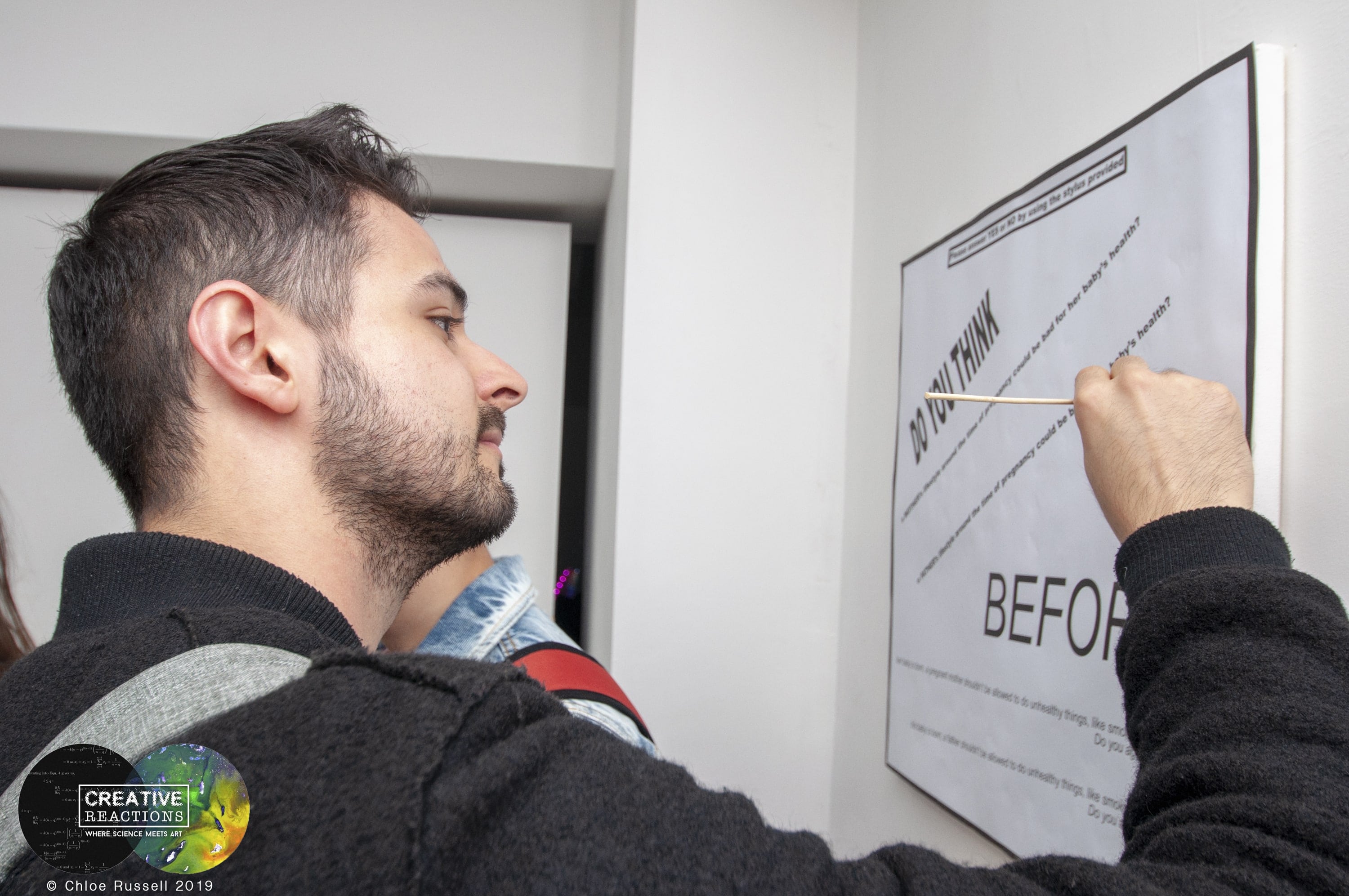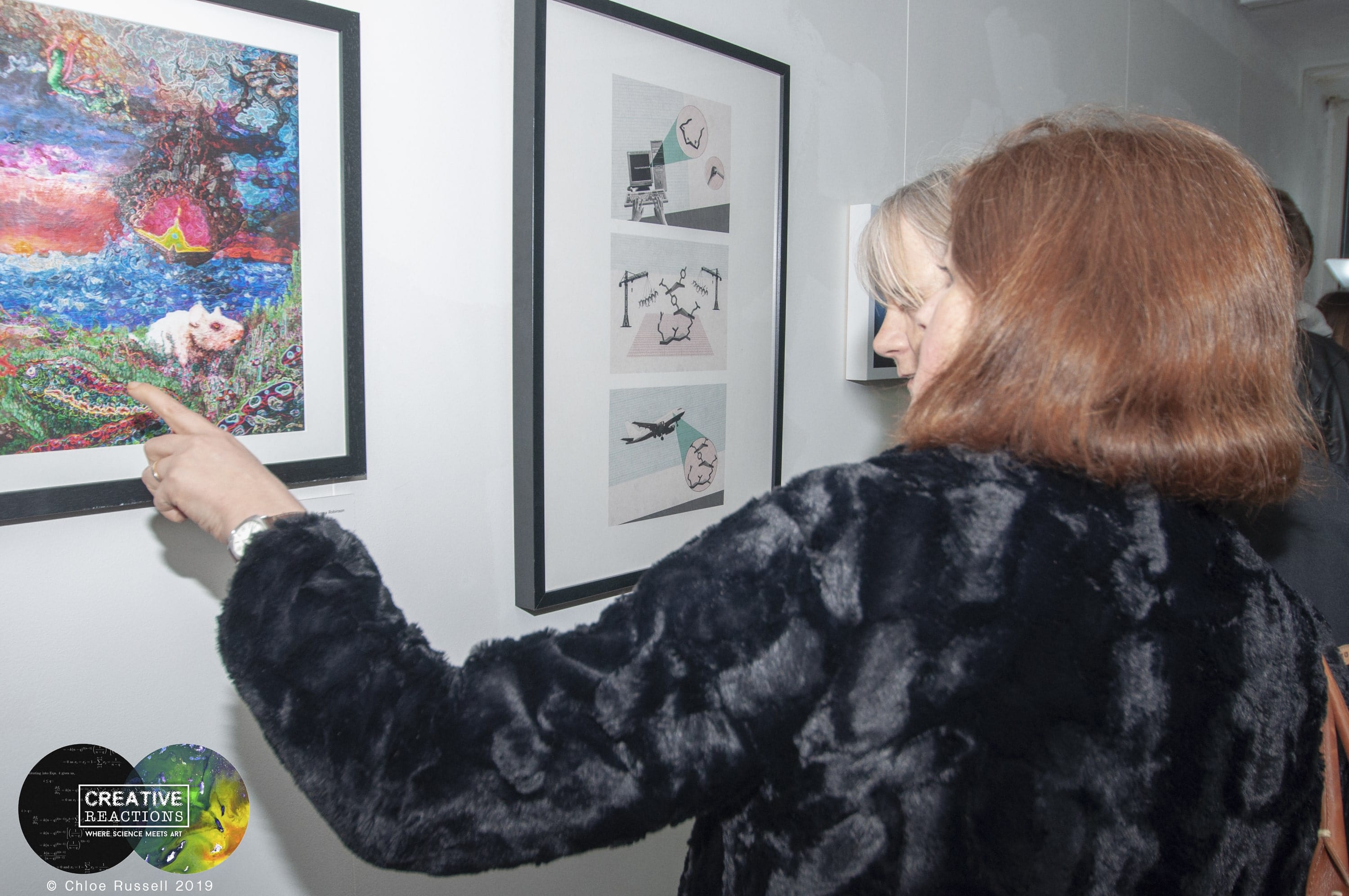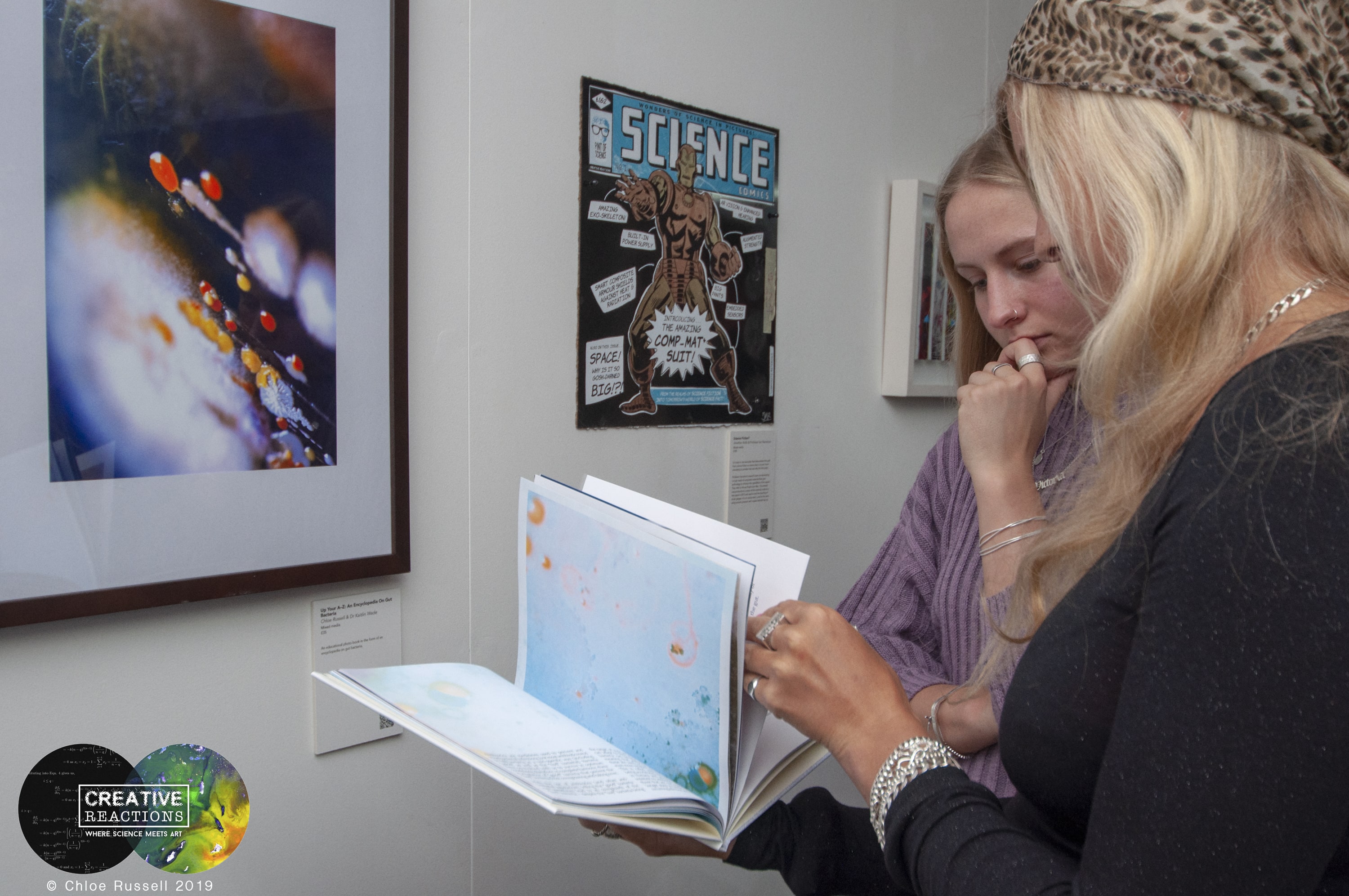Creative Reactions, 2019
In May 2019 we held an art science exhibition in two venues in Bristol. With 50 artists and 50 researchers working together to explore research this was our largest exhibition to date. The successful collaborations between artists and researchers led to a wide array of artistic responses to the research. From hand carved musical instruments and cancerous looking tree branches to representations of chaos and psychedelic dream states. Summarised evaluation can be found at the bottom of this page.
Researcher
I found working with an artist a really interesting experience. Finding out the impressions that an outsider gets from my research provides a different perspective, and any opportunity I get to communicate my science to people outside my field is always rewarding. It’s always surprising to find what different people take away from the themes of my research, as it’s easy to get very narrow-minded in terms of application when studying.
Artist
It was really fascinating to learn about all the areas of research, being able to pick and choose what interested me most to take further. It was a very different experience collaborating with someone from an academic background, where I was directing the project relying on materials and information from them as a starting point.
We chose our venues based on two audiences. For the first two weeks of the exhibition we were resident in North Space in South Bristol. A co-working space on a busy high street, North Space was within a 10 minute walk of 4 primary schools we hoped to work with and invite to the exhibition. We were able to deliver two workshops within the gallery for two primary school classes and deliver a further nine workshops at one of the primary schools. These workshops allowed the children to explore different areas of science through a wide variety of creative activities including badge making.
During the second two weeks of the exhibition we were resident at The Island, in the centre of Bristol. The Island is home to a number of studios and performing spaces and we hoped many of those who use the facilities would explore the exhibition and attend a number of the events we hosted.
A number of the artworks were lent to the University of Bristol Research Without Borders event during the exhibition, which over 500 people visited. Additionally, a number of artists made multiple different pieces for their collaborations which they held separate exhibitions with. We had just over 1,600 visitors to our exhibition spaces. This was the largest exhibition we have held both in terms of participation and visitor numbers.
